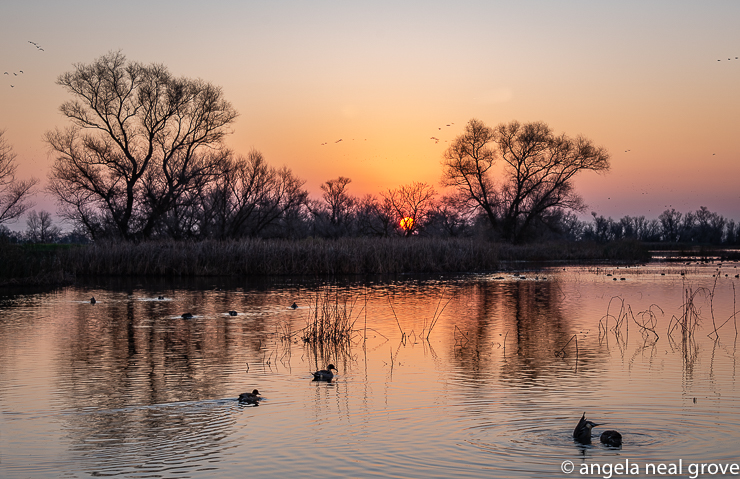
Travel Vicariously
Each winter thousands of snow geese, birds of a feather, fly south to winter in Northern California. I wanted to see these travelers, these birds who know where to head south when the mercury drops.
During Covid my own travel wings have been clipped. Hanging out with these feathered migrants maybe I could travel vicariously. There have been no restrictions on the Pacific Flyway, the great arial freeway which extends from the Alaskan Arctic to the tip of Patagonia. This avain thoroughfare is used by all birds of a feather from sturdy snow geese and cranes to diminutive hummingbirds.
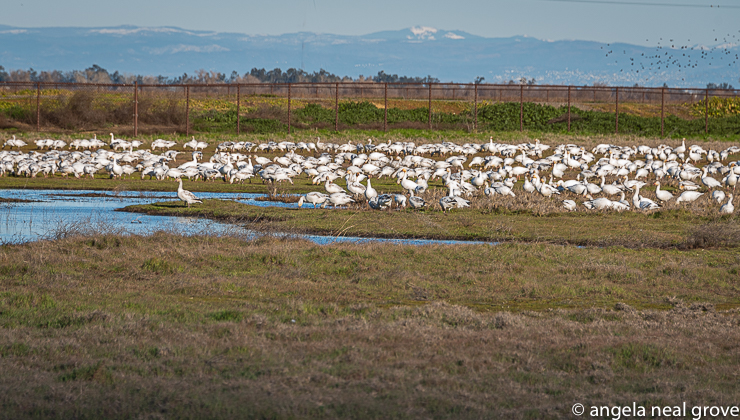
Feathered Migrants
Dawn was just a faint glimmer as I headed to the Colusa National Wildlife Refuge on a chilly morning. The waters of the wetland gleamed, reflecting the early light. Winter trees etched a silhouette against the sky and dark limbs reflected in the inky water. Ducks were already busy feeding, intently searching underwater, triangular tails aloft. In the sky V shaped formations of geese were in descent.

Pacific Flyway
Like a Swiss train these winter migrants arrive in California on time, in late fall. They descend on wetlands and flooded rice fields to winter, feed and rest before flying back to Alaska and Canada for spring breeding season. They are among the estimated billion birds which migrate along this Pacific Flyway.
This is only a fraction of those birds who used the route a century ago. Habitat loss, water shortages, diminishing food sources and climate change are to blame say the National Audubon Society.
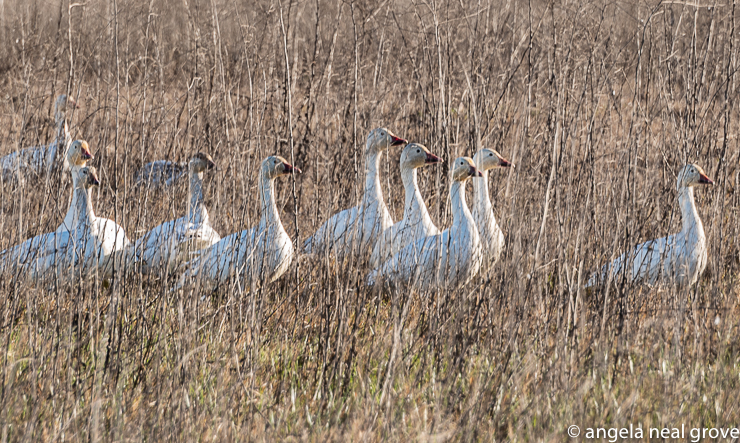
Creating Avian Refuges
Before the arrival of European settlers in the 19th century the Sacramento Valley was untouched wetland and grassland. By the beginning of the 20th century most of this had been converted into farmland with a mere 10% of the original wetland remaining.
To ensure there would be a place for migrating and wintering birds, while acknowledging the needs of farmers, the Sacramento National Wildlife Refuge Complex was created. The Colusa Refuge which I visited is part of this Complex.
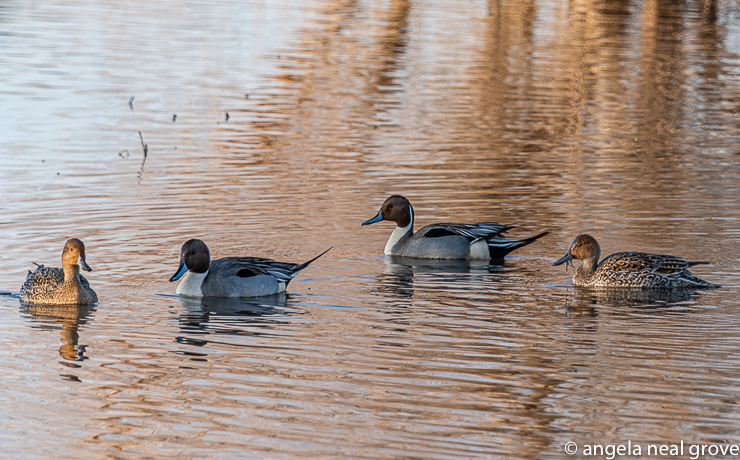
Over 300 Birds and Mammals
The total area of the Sacramento wetland refuges is about 140 square kilometers. In this area over 300 species of birds and mammals live or visit. Not only did I see swirling flocks of snowy geese and ducks, but raptors, waders, owls, herons and a majestic bald eagle.
Cars are allowed onto narrow gravel roads threading through the wetlands to view the wildlife. There are a few places with overlooks where visitors can leave the car. But this is a refuge for all birds and wild creatures. They have priority.
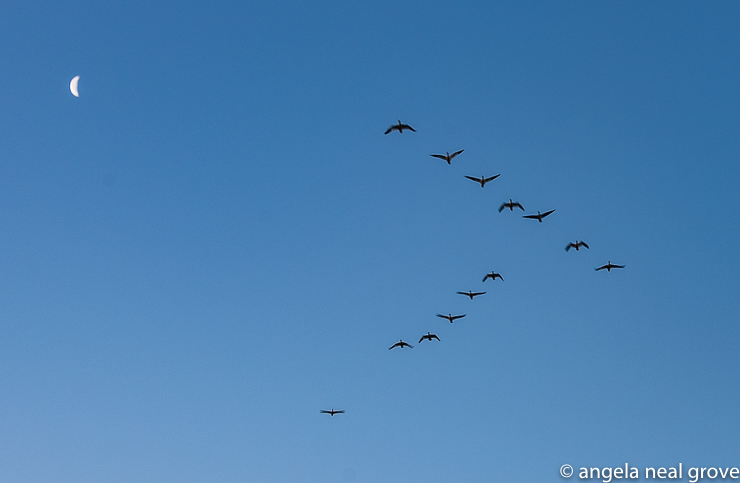
Birds of a Feather as Inspiration
The Finnish composer Sibelius was entranced by a flock of whooper swans flying overhead:
“Today I saw 16 swans. God, what beauty! They circled over me for a long time. Disappeared into the solar haze like a silver ribbon.”
In his 5th Symphony: A Song for Swans, he uses a “swan theme” which immortalizes the rhythmic wingbeats of the birds.
Later on that day, as I watched the sun disappear behind distant snow-topped mountains I could imagine the composer’s inspiration. The sky darkened. Calls and sounds from the birds quietened. A full crescent moon appeared, then stars filled the sky.
Then I traveled vicariously with the birds. Imagining the sweep of the Pacific Flyway from Arctic to Antarctic and the travelers, the birds of a feather with their unspoken tales, who have used this avian thoroughfare from time immemorial.
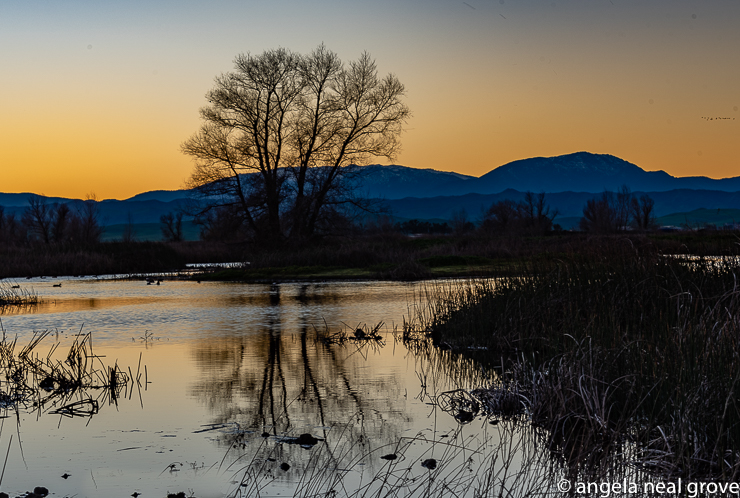
.

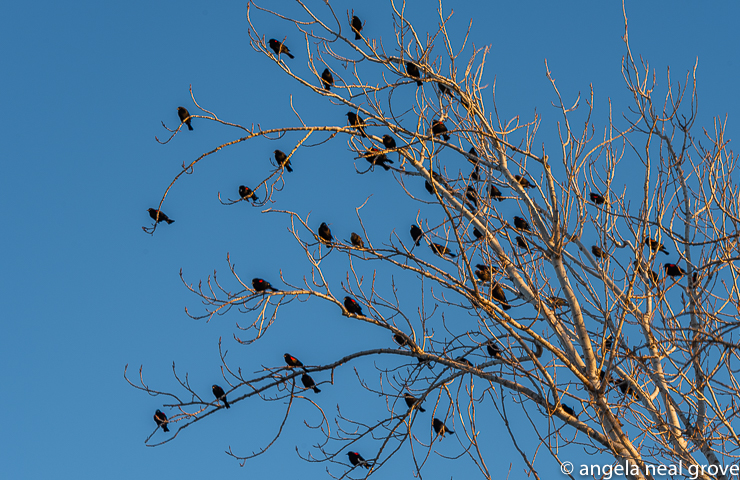
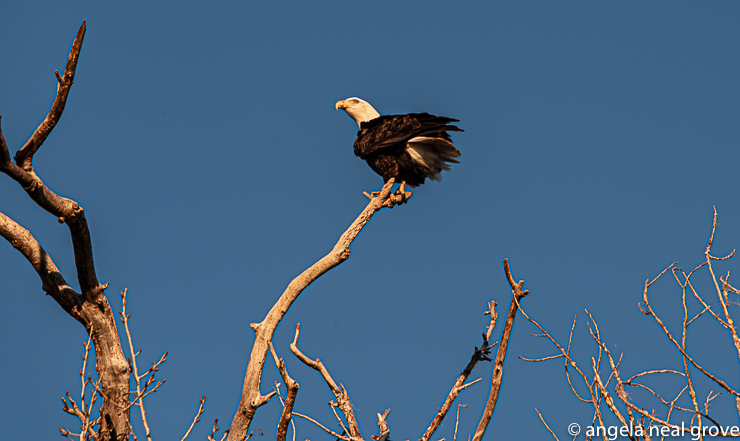
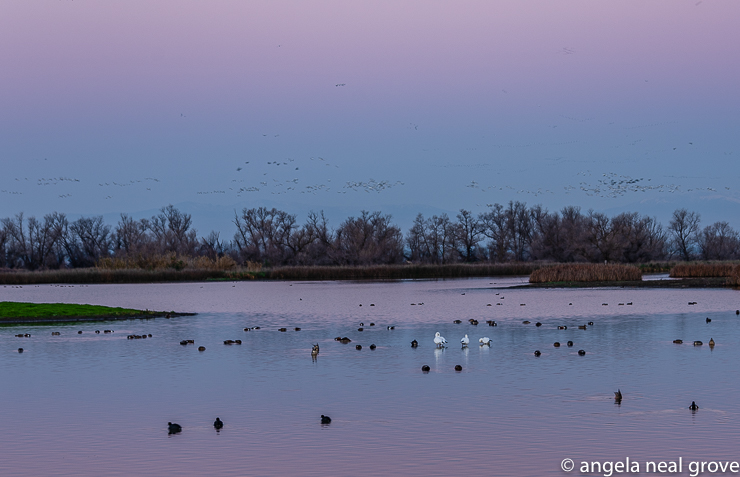
Dear Angela,
Thank you for your wonderful article and photos of “Birds of a Feather’. Here in NYC, I hear the chirps of birds in the bushes along the path of the resevoir that i run along a couple of times of week. i don’t tend to think of where they came from and the challenges of their journey. Central park is a resting place for many migratory birds and your focus was a marvelous heads up to stop and pay attention to the wonder of their presence.
would love to hear from you1 do hope that you’ll be back in east hampton this summer for our annual dinner.
we will be traveling for most of july (world politics permitting), but should be at home in august.
hugs, Wendy
Hello Wendy,
It was really interesting seeing the migrating birds and to learn more about the pacific flyway. how wonderful that migrating birds find a resting place in central park. in the center of NYC. i have read reports of red tail hawks, rare ducks and even members of the parrot family. I will be in touch about getting together.
XOX Angela